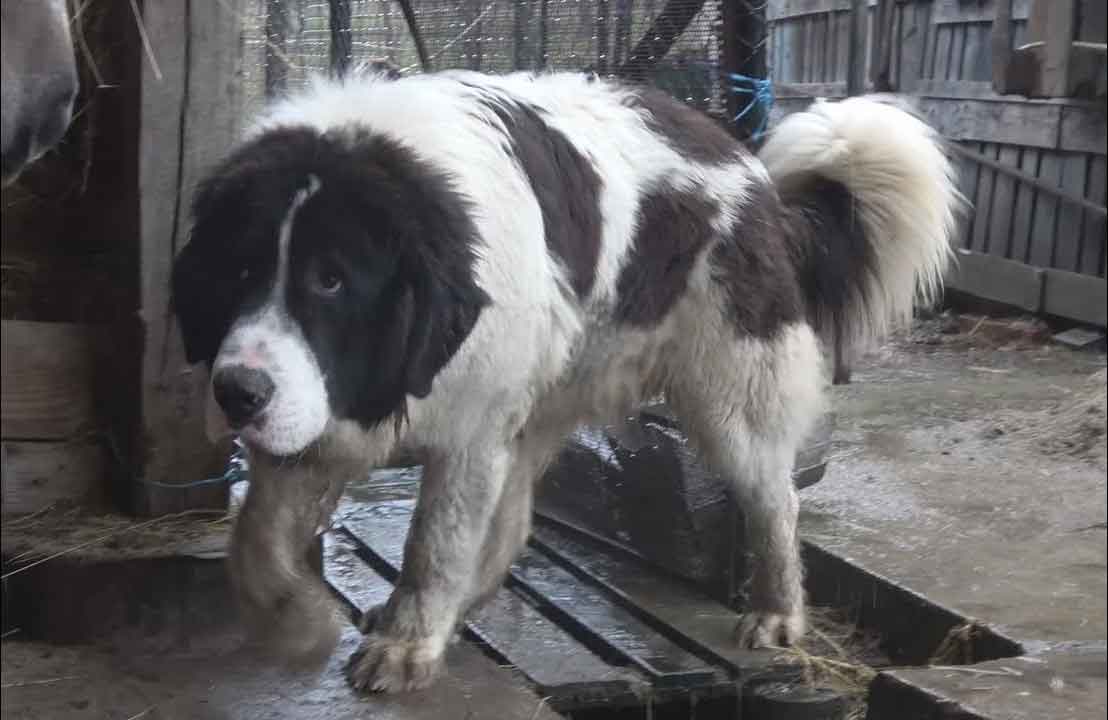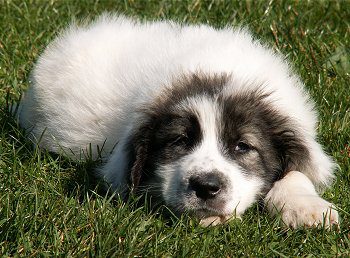Content |
|---|
Characteristics "Romanian Bucovina Shepherd"
Coexistence is important that you have with your new friend. Before considering the acquisition of a dog of the breed "Romanian Bucovina Shepherd" you know certain factors.
Not all breeds of dogs are apt to live in an apartment, you must take into account his character, their need for exercise, their interaction with other pets, their care and if you have small children, their level of tolerance towards them.
Adaptation ⓘ3.0 out of 5 stars (based on 1 review)
|
friendly dog ⓘ3.0 out of 5 stars (based on 1 review)
|
hair loss ⓘ5.0 out of 5 stars (based on 1 review)
|
|---|---|---|
Affection level ⓘ5.0 out of 5 stars (based on 1 review)
|
Need for exercise ⓘ4.0 out of 5 stars (based on 1 review)
|
Social need ⓘ2.0 out of 5 stars (based on 1 review)
|
Home ⓘ2.0 out of 5 stars (based on 1 review)
|
Toilet ⓘ2.0 out of 5 stars (based on 1 review)
|
Friendly with strangers ⓘ2.0 out of 5 stars (based on 1 review)
|
barking ⓘ5.0 out of 5 stars (based on 1 review)
|
Health ⓘ3.0 out of 5 stars (based on 1 review)
|
Territorial ⓘ5.0 out of 5 stars (based on 1 review)
|
Cat friendly ⓘ3.0 out of 5 stars (based on 1 review)
|
Intelligence ⓘ5.0 out of 5 stars (based on 1 review)
|
Versatility ⓘ3.0 out of 5 stars (based on 1 review)
|
Child friendly ⓘ5.0 out of 5 stars (based on 1 review)
|
Surveillance ⓘ4.0 out of 5 stars (based on 1 review)
|
joy ⓘ3.0 out of 5 stars (based on 1 review)
|
History
Natural breed known for centuries in the Bucovina region, in northeastern Romania, the Romanian Bucovina Shepherd was brought to light for the first time in 1934 by G. Radulescu Calafat, publisher of the first Carpathian Sheepdog standard, who mentioned in an article published in the journal Vet Sciences another molosoid-type sheepdog called “Dulau” or “Capau”. Until then, the Romanian Bucovina Shepherd had been compared to Romanian Carpathian Shepherd Dog, smaller.
While the Romanian Bucovina Shepherd has long been used as a guard dog for flocks of sheep against large predators in the Carpathians, like bears, wolves and lynx, it has also been used for many years by Romanian farmers as a guard dog.
In 1982 the Romanian Cynological Association, the canine organization of reference in the country, developed a first standard that described the Romanian Bucovina Shepherd. It was updated in 2001 and 2002 in accordance with the FCI requests (International Cynological Federation) with a view to their recognition of the breed, what actually happened provisionally in 2009.
In 2019, the Romanian Bucovina Shepherd obtained the definitive recognition of the FCI. On the other hand, not yet recognized by the British reference organization, The Kennel Club, nor by the American Kennel Club (AKC) and the United Kennel Club (UKC).
In fact, still very rare outside its country of origin and some neighboring countries, like Ukraine or Serbia. In Romania there have been 6.000 specimens in the Romanian Stud Book, but only the breeding of 300 females and 200 males, as Romanian law imposes many restrictions on the breeding of dogs.
Photo: Ciobanesc de Bucovina – Romania 2018 by 1jagdterrier – YouTube
Physical characteristics
"Romanian Bucovina Shepherd" |
||
|---|---|---|
The Romanian Bucovina Shepherd they are huge dogs with a body slightly longer than the tall, powerful lower limbs and a horizontal, muscular back. Placed high on the body, its long tail is carried hanging at rest and rises in the back in a slightly upward curve when in the gazebo.
The head, which is wide and carried slightly higher than the body, blends in with the voluminous and moderately long neck, which forms an angle of 100 to 110 degrees with the rest of the body.
The muzzle is black, the eyes are relatively small in relation to the head, the powerful jaw is chisel-shaped and the V-shaped ears with rounded tips fall along the cheeks.
While the head and the front of the legs are covered with short hair, the rest of the body is covered with dense hair, long (6 to 10 cm.) and quite stiff. The coat is predominantly white, marked with black spots, gray or leonadas well defined. But, the standard of Romanian Bucovina Shepherd it also recognizes unbleached, uncoloured specimens that are completely white, white as snow, gray like ash or black.
Sexual dimorphism is well marked in the Romanian Bucovina Shepherd, being the male larger than the female.
Character and skills
The Romanian Bucovina Shepherd is a quiet dog, balanced, devoted and who loves children, what can make it an ideal dog for a family. On the other hand, especially wary of strangers, so it is important to socialize him from an early age with the people with whom he can come into contact: friends, neighbors, postmen…
Accustomed to guarding herds in the company of other dogs, coexists perfectly with its congeners and other pets that share its territory.
It is not aggressive at all, the Romanian Bucovina Shepherd they are not prone to attack without reason. On the other hand, their very protective character makes them react in a very intimidating way if they perceive an intrusion into their territory. However, his growls and especially his serious and powerful barks are just a way to scare “invaders” and they are rarely precursors of offensive action. But, if you feel that your “family” (which is simply the herd that is in charge, if he has always lived like a sheepdog) is threatened, this extremely brave and protective dog risks going on the attack, without even backing down in front of a bear or a pack of wolves.
Independent and used to wandering alone in the wild mountains of Romania, the Romanian Bucovina Shepherd tolerates loneliness quite well and can be left alone for a few days without too much trouble, although he obviously prefers the company of his family. But, your ability to keep busy depends on having enough space to walk freely.
Due to its size, his resonant voice and his need for great spaces, the Romanian Bucovina Shepherd They are not dogs that can live comfortably in apartments and are not recommended for urban areas. They greatly prefer sparsely populated areas, where they can patrol their territory in peace and quiet without risk of unwanted encounters.
A very active and resistant dog, he needs daily physical activity and is happy to accompany his master on his long walks in the countryside.
Education “Romanian Bucovina Shepherd”
"Romanian Bucovina Shepherd" |
||
|---|---|---|
The puppy's socialization phase is of primary importance for the puppy. Romanian Bucovina Shepherd, and it is very important that you meet your family very soon, to possible other household pets, as well as the other people and animals that you will meet regularly during your life. In effect, once adult, you find it difficult to accept a new person in your environment (including for example a prospective dog handler or dog behaviorist), although this is not impossible.
As an intelligent and obedient dog, can be easily trained and trained for his future role as a sheepdog or watchdog from his first birthday. Despite its independent nature, responds very well to positive reinforcement methods, but the teacher must ensure that he always maintains a strong and authoritative demeanor.
It also, instead of a long daily training session, it is advisable to opt for several short sessions spread throughout the day.
Health “Romanian Bucovina Shepherd”
The Romanian Bucovina Shepherd it is a particularly healthy and resistant breed.
But, like most large breeds of dogs, are prone to hip dysplasia and elbow dysplasia. To reduce risks, you have to make sure that he does not undergo too much physical activity during his growth period.
Gastric dilation of the dog is another problem that can affect this breed. Due to ingestion of food too fast, especially if they are dry, can be life-threatening and requires urgent intervention by a veterinarian. To minimize this risk, it is recommended to leave large amounts of water available when the dog eats, divide his daily ration into at least two meals and let him rest after these meals.
Grooming “Romanian Bucovina Shepherd”
The Romanian Bucovina Shepherd they are long-haired dogs that need to be brushed once a week, and even more often during the moulting period. Losing her hair galore, not recommended for people who do not like to find dog hair all over the house and always have a perfectly clean interior.
It also, at the end of winter, it is advisable to cut the hair between its pads to protect your dog from heat.
It is not necessary to bathe your dog unless, of course, is particularly dirty. In any case, no more than 2 or 3 times a year, as this can damage the natural protective layer of the skin.
On the other hand, it is necessary to regularly check the inside of the ears, since it is common for external parasites to hide there, and clean them well to avoid any risk of infection.
The dog's claws should be checked monthly and trimmed if natural wear and tear is not enough.
Food “Romanian Bucovina Shepherd”
If he Romanian Bucovina Shepherd he has always been fed what his shepherd used to prepare for him, good quality commercial croquettes are today an ideal solution, If and when, of course, the manufacturer's recommendations are followed.
Bones are important in this dog's diet, so it can be useful to give him a bone to gnaw on from time to time. But, chicken bones and other poultry should be banned as they can cause serious damage to the digestive system.
It also, as with any dog ​​at high risk of bloating-twisting stomach, the daily ration should be divided into 2 or 3 meals and ensuring that the dog remains calm during and after these meals. This means, for example, make sure he sees his food coming instead of discovering it in front of him when he wakes up, avoid having another animal around you when you eat, and do not stimulate him during his meal or in the following hour.
It also, is essential for Romanian Bucovina Shepherd have large amounts of fresh water available at all times.
Price “Romanian Bucovina Shepherd”
a puppy of Romanian Bucovina Shepherd usually sold between 500 and 1000 EUR, but prices have tended to rise as the breed has been the subject of some interest after its recognition by the FCI. Males tend to be more expensive than females, and the price is higher when the animal has a smooth coat.
It is necessary to be well informed about the origin of the puppy and check the documents with the Romanian Canine Association. Since 2015, the breeding of dogs without a pedigree or not registered in the Romanian Stud Book is prohibited in Romania, and the marketing of these puppies is illegal.
Videos "Romanian Bucovina Shepherd"
|
Ciobanesc de Bucovina – Romania 2018 by 1jagdterrier
|
Shepherd of Bucovina – Ilie Forest 2018
|
|---|
Type and recognitions:
- FCI CLASSIFICATION: 357
- Group 1: Sheepdogs and Cattle Dogs (except Swiss Cattle Dogs)
- Section 1: Sheepdogs. Without working trial..
Federations:
- – FCI – Group 1 Herding dogs, Section 1 Sheepdogs ⓘ
FCI breed standard "Romanian Bucovina Shepherd"
Alternative names:
1. Bucovina Sheepdog, Bucovina Shepherd, Southeastern European Shepherd (English).
2. Berger roumain de Bucovine, Berger de l’Europe du Sud-Est (French).
3. Ciobănesc Românesc de Bucovina (German).
4. (em romeno: Ciobanesc Romanesc de Bucovina) (Portuguese).
5. (en rumano: Ciobănesc de Bucovina) (español).


